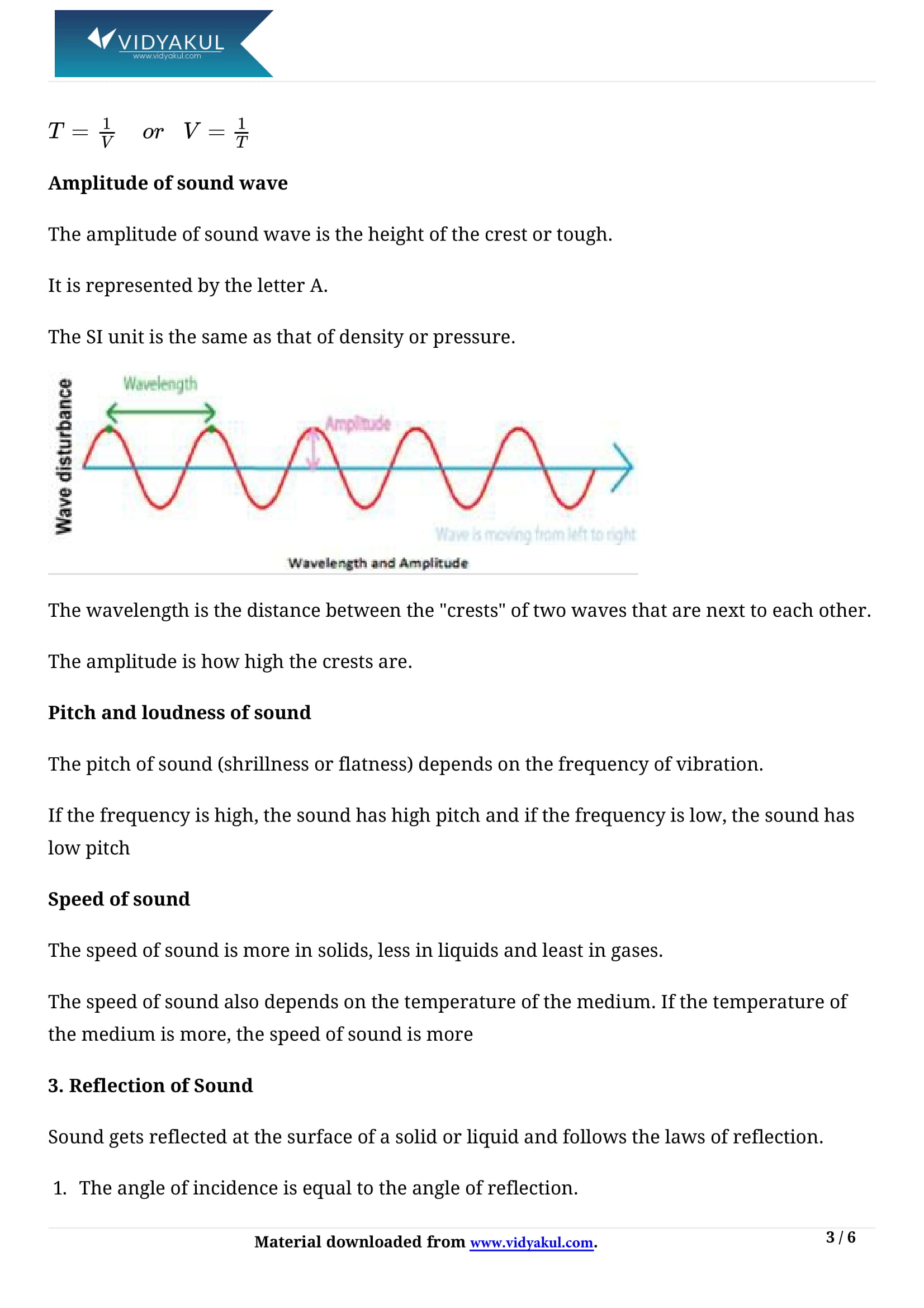Sound Class 9 Notes

Chapter 12 Sound
A wave is a disturbance in a medium that travels from one point to another and transfers energy without net movement of the particles. It can take the form of elastic deformation or pressure change.
Example: A rubber stopper on water causes rocks to rise and fall as they fall into the water, creating ripples.
NCERT notes help students learn and practice the topics covered in Class 9 Science, Chapter 12 Sound. In this article, we have provided NCERT notes for this chapter in PDF format so that students can find detailed notes to textual questions. These notes helps students understand the various concepts discussed in this chapter. Texts and exercises are addressed step by step according to the latest recommendations. Vidyakul also provides free access to over 2,630 questions from 73 different books to give students extra practice for their exams.
Scroll down to see all the details about NCERT notes.
CBSE CLASS 9th CH-12
Points to Remember
We have provided some important points that are covered in NCERT Class 9 Science Chapter 12 to help students in their exam preparations. Refer to the list below:
Sound is mechanical energy which produces the sensation of hearing.
For hearing sound, there must be (a) a vibrating body, (b) a material medium for its propagation, and (c) a receiver, such as the human ear.
Sound energy does not propagate through a vacuum.
When the particles of a medium oscillate in the same direction, in which wave is being propagated, such a wave is called a longitudinal wave.
While the transverse wave is being propagated in a medium, the particles of the medium oscillate at right angles to the direction of wave propagation.
Transverse waves can be produced in solids and liquids, but not in gases.
For a transverse wave, the highest point on the elevation or hump is called the crest, whereas the lowest point on the depression or the hollow is called a trough.
Compression is a region in a longitudinal wave, where the particles of the medium are crowded together. It is a region of high pressure and high density.
Rarefaction is a region in a longitudinal wave, where the particles of the medium are spread wide apart. It is a region of low pressure and low density.
Students can check all the important points to remember from NCERT Class 9 Science Chapter 12 Sound on Vidyakul for free.
Topics and Sub- topics
In this chapter, various concepts related to sound are explained through exercises, examples, and diagrams. Students learn how sound is created and propagated. They also learn about two of the most important aspects of sound transmission. Sound needs a medium to propagate and sound waves are longitudinal waves. This chapter also describes the important properties of sound waves (frequency, amplitude, and velocity) and the speed of sound in various media. Other concepts such as sound reflection, reverberation, reverberation, etc. explained. Practical applications such as the use of multiple acoustic reflections, applications of ultrasound, SONAR, etc. will also be discussed.
We have also provided in the table below a list of important topics covered in Chapter 12 of NCERT Grade 9 Science for students' reference.
Few Important Questions
What is a ‘Wave’?
A wave can be described as a disturbance that travels through a medium, transporting energy from one location to another location without transporting matter.
What is the definition of ‘Amplitude’?
The amplitude of a sound wave is the measure of the height of the wave.
What is an ‘Echo’?
An echo is a sound that is repeated because the sound waves are reflected back.
Sound is mechanical energy which produces the sensation of hearing.
For hearing sound, there must be (a) a vibrating body, (b) a material medium for its propagation, and (c) a receiver, such as the human ear.
Sound energy does not propagate through a vacuum.
When the particles of a medium oscillate in the same direction, in which wave is being propagated, such a wave is called a longitudinal wave.
While the transverse wave is being propagated in a medium, the particles of the medium oscillate at right angles to the direction of wave propagation.
Transverse waves can be produced in solids and liquids, but not in gases.
For a transverse wave, the highest point on the elevation or hump is called the crest, whereas the lowest point on the depression or the hollow is called a trough.
Compression is a region in a longitudinal wave, where the particles of the medium are crowded together. It is a region of high pressure and high density.
Rarefaction is a region in a longitudinal wave, where the particles of the medium are spread wide apart. It is a region of low pressure and low density.
What is a ‘Wave’?
What is the definition of ‘Amplitude’?
What is an ‘Echo’?
Know more about the same in Sound Class 9 Notes pdf.
Download this solution for FREE Download this PDF









